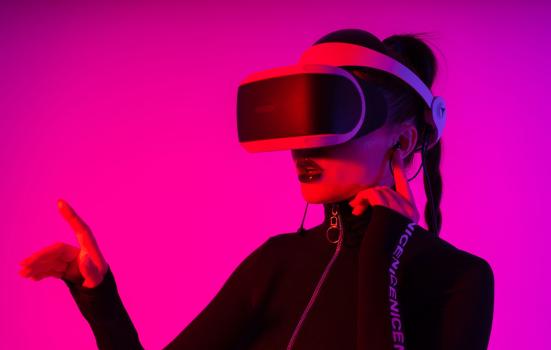Funding will be used to establish a national studio for advanced technologies to drive developments in live theatre, music and visual art.

Oleksandr Pidvalnyi
Close to £100m will be invested in a new national hub to develop state-of-the-art technologies to help the live performance sector become "cheaper and greener", the Art and Humantities Research Council (AHRC) has announced.
As part of a push to improve research and innovation in the arts, AHRC will invest £95.8m to develop Convergent Screen Technologies And performance in Realtime (CoSTAR) to “transform the screen and performance sectors of the UK’s creative industries”.
The organisation said CoSTAR facilities will be open to organisations across the UK creative industries that have an involvement or interest in adopting virtual production technologies and in the potential of the "metaverse", including the film, TV, games, live performance (theatre, music, visual arts), and museum and gallery sectors.
READ MORE:
- Digital award winners embrace new audiences
- Creative industries collaboration to explore potential for immersive performance
"CoSTAR will support the development and application of ‘virtual production’ technologies such as in-camera visual FX, and performance capture which depend on emerging tools and processes which have the potential to make media production both cheaper, greener and better able to meet global market demand," an AHRC spokesperson said.
"It will focus in particular on technologies with the potential to increase convergence of the gaming, screen, performance and wider digital sectors in the decades ahead."
AHRC’s Strategic Delivery Plan 2022-2025, reveals that the funding agency will provide £31.5m of the total committed investment over the next three years.
“By providing access to new, innovative technologies and new space and resources for research and development, [CoSTAR] will equip these sectors with the skills and resources to lead the world in technology-driven media, driving post-Covid revival and wider economic benefits,” the plan states.
The investment in CoSTAR is part of UKRI’s long-term innovation ambitions to marshal “unique combinations of technologies and capabilities” to “unleash potential” in key sectors and support dynamic creative businesses.
Advancing digital technology
CoSTAR will consist of a central hub and experimental studio, along with a network of three smaller labs across the UK. They will each be fitted with real-time digital technologies aimed at supporting the screen, gaming and performance sectors to develop new products and experiences.
Advanced technologies including motion and volumetric capture will be used to explore new forms of performance, using techniques such as allowing viewers to rotate or move around in what appears to be three-dimensional space. The hubs will work with partners across the UK, offering commercial studio partnerships and support for skills development.
They will also serve as a data resource for the creative community, collecting, combining and improving data from diverse sources and pioneering new data collection techniques.
In recent years, digital technology has increasingly been used to experiment and enhance live theatre, dance and music performances.
Virtual reality and augmented reality tools, 3D projections, stop-motion camera work and computer animation have all been used to create experimental interactive and immersive performances that alter the relationship between performers and their audiences.
Meanwhile, the advent of 3D printing has opened up new possibilities for theatrical set and prop design and digital lighting advances have enabled engineers to adjust hundreds of lights from a central control station, allowing for greater customisation and nuance.
Technology such as the cameras used by some gaming consoles to detect human movement are also being adapted for use on stage.
In dance, advances in digital technology, including robotics and AI, have allowed for experiments in mapping, recording and generating new choreography and exploring new types of movement.
Other projects use computer programmes to create digital libraries of dance moves that can be compiled into scores, with some programmes able to suggest options for sequences of movement based on an initial prompt.
Live music performances have also begun to utilise digital tools, including virtual reality headsets, holograms and online animations, as well as face-mapping technology that allows performers to interact with audience via live streams.




